Perhaps like you, I’m attracted to places where painters and authors created important works of art and literature. As many as 600,000 people visit Walden Pond each year to see the landscape and cabin that inspired Henry David Thoreau’s writing. Cézanne’s atelier in Aix-en-Provence and the nearby Sainte-Victoire Mountain expose visitors to the scene of his many still lifes and landscapes.
Some people sense a spiritual connection to the artists and artworks when they visit such places or consider it a pilgrimage to pay respect. However, I’m interested in how environments influence creative work. That’s why I prefer to conduct interviews in artist studios and when possible, visit their plein air painting locations. I think the studio books, sketches, still life objects, photographs, pets, furniture, works in progress, degrees of tidiness, and window views give me greater understanding of the subject matter and person.
While planning a trip to the Netherlands, I discovered that I’d be near Nuenen, which is the “Van Gogh Village” where the painter lived for about two years and painted the Potato Eaters among other works. Walking in Van Gogh’s approximate footsteps and inhabiting the environment that informed one of his most famous works appealed to me. This would be my second Van Gogh-related excursion. Longtime readers may recall my visit to Dafen, Shenzhen, China, an oil painting village that could claim the world record for replicating Van Gogh paintings. You can read that story here.
When our friend Edwin heard I planned to take a bus to Nuenen from my hotel in Eindhoven (123 km south of Amsterdam), he volunteered to be chauffeur and tour guide, which sounded great to me. As a local, he knew a lot about Van Gogh’s painting locations, he’s good company, and he and his lovely wife Jacqueline offered to join me for lunch after the museum visit. Unfortunately, the Palate & Palette staff photographer had to work that day, so he was unable to join the adventure and produce the high-quality images you’ve come to expect here.
On the morning of our outing, Edwin picked me up in his mechanical pride—a vintage 1973 metallic gold Volvo 244 GLE that runs on liquefied petroleum gas.
In addition to being a university town, Eindhoven is known as “The City of Light” for the now defunct Philips lightbulb factory; it is still home to the company’s global headquarters. After a 15-minute drive through highways, many rotaries, and fields, we arrived in Nuenen.
“Van Gogh Village” sounds quaint, doesn’t it? Parts of it remain untouched from Vincent’s time.
Van Gogh was 30 when he came to Nuenen in 1883 to live with his parents in their vicarage. It’s notable that both Henry David Thoreau and Van Gogh lived with their parents at times during their adulthoods, albeit Henry more harmoniously than Vincent. Van Gogh’s father disapproved of his artist lifestyle, making for a tense and temporary living situation. Another source of conflict arose when Van Gogh had a brief romance with his next-door neighbor whose family forbade her from seeing him. This was one of many turbulent relationships.
The vicarage where Van Gogh lived with his parents was also a painting subject:
The laundry room where Vincent did much of his painting until he moved out of his parents’ place is at the back of the house:
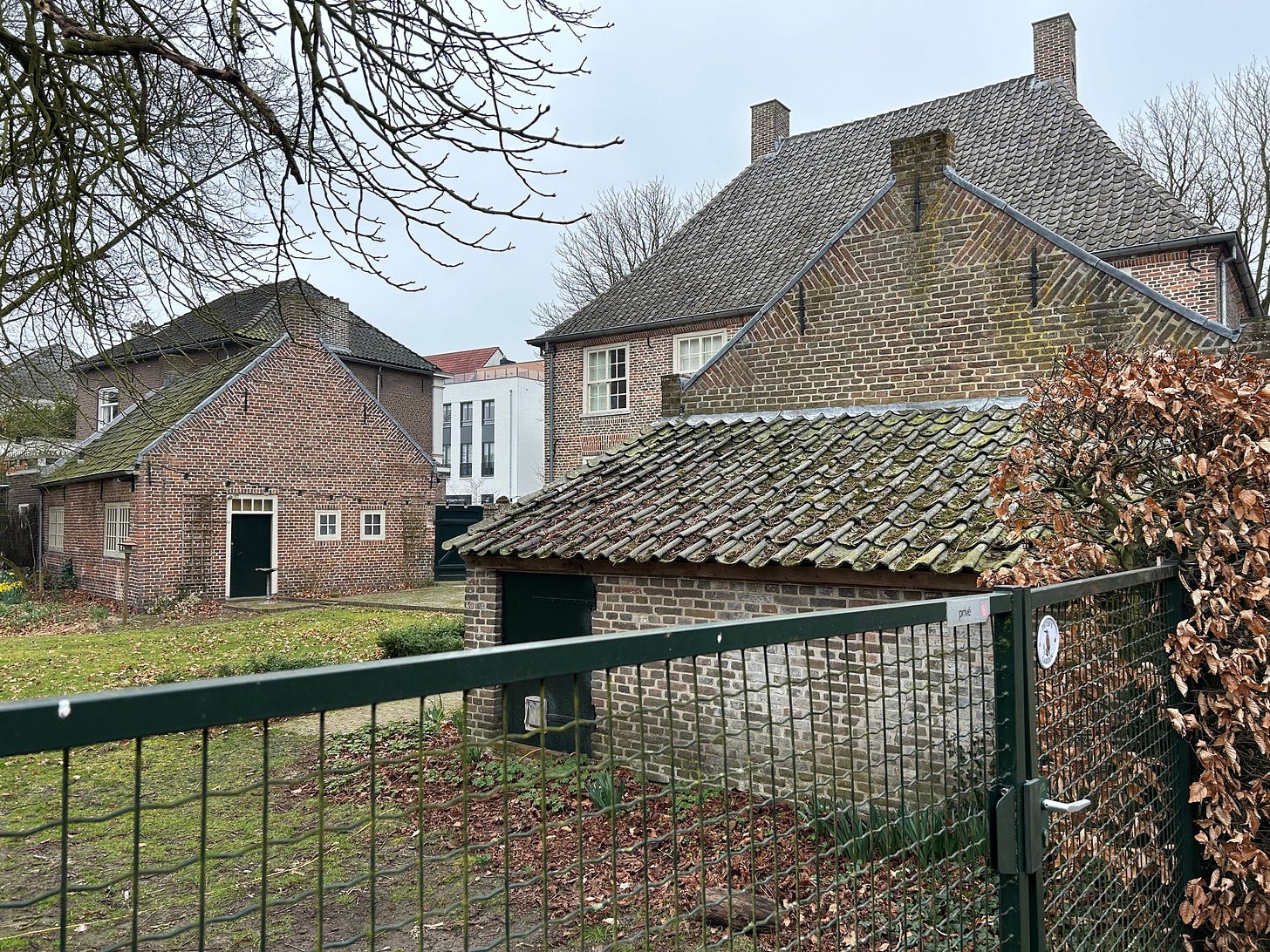
The Van Gogh Village Museum is sited across the street from the Van Gogh’s vicarage. Despite the dearth of original and now priceless paintings and drawings, the museum is a worthwhile visit for those curious about how Vincent’s life experiences and environment shaped him as an artist. The museum provided a detailed history of Van Gogh’s time in Nuenen, as well as his family background.
The museum’s displays, reproductions, and videos re-enacting his life in Nuenen highlighted the painter’s interest in the town’s peasant farmers and weavers.
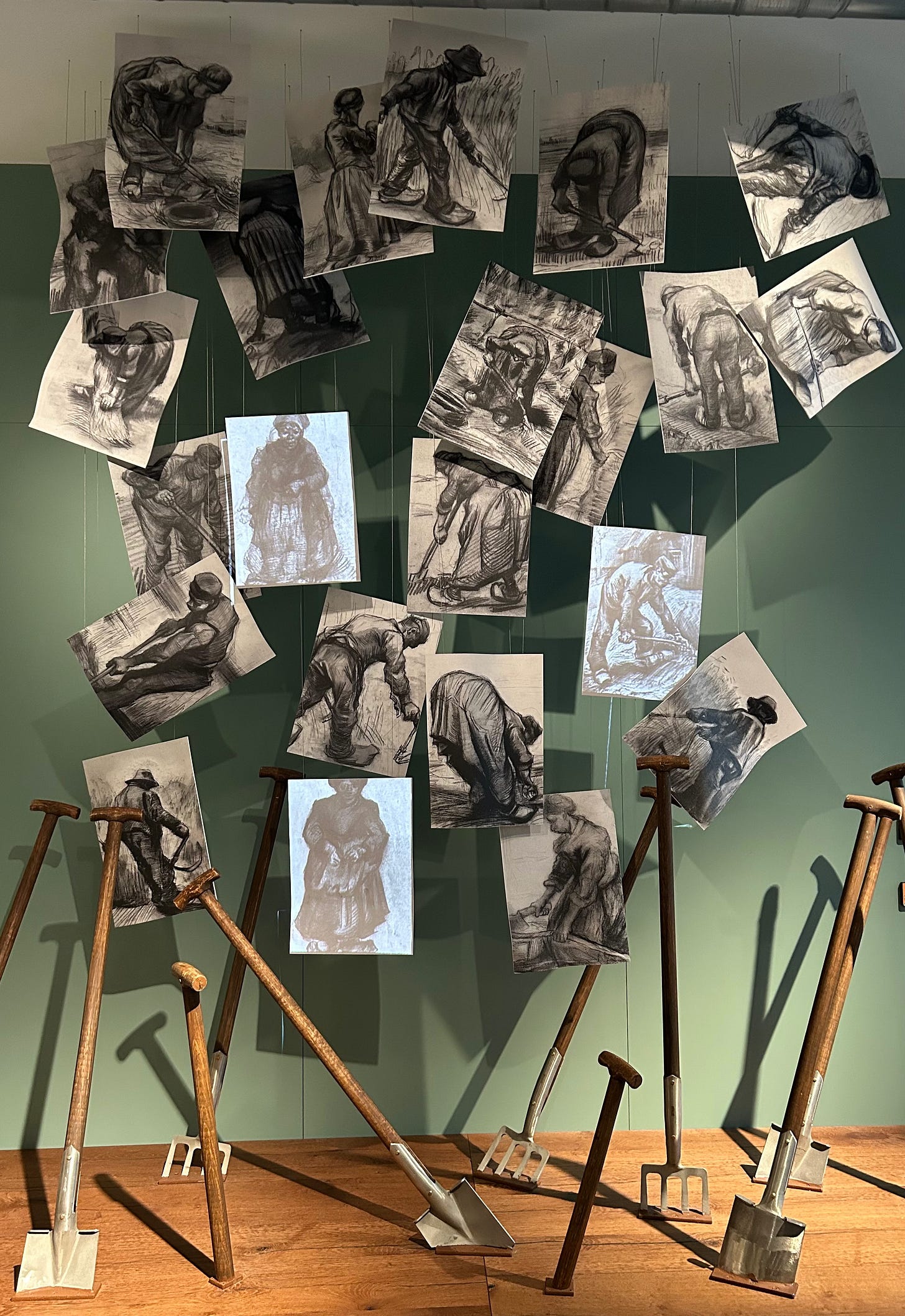

Van Gogh also produced numerous studies in preparation to paint the Potato Eaters.
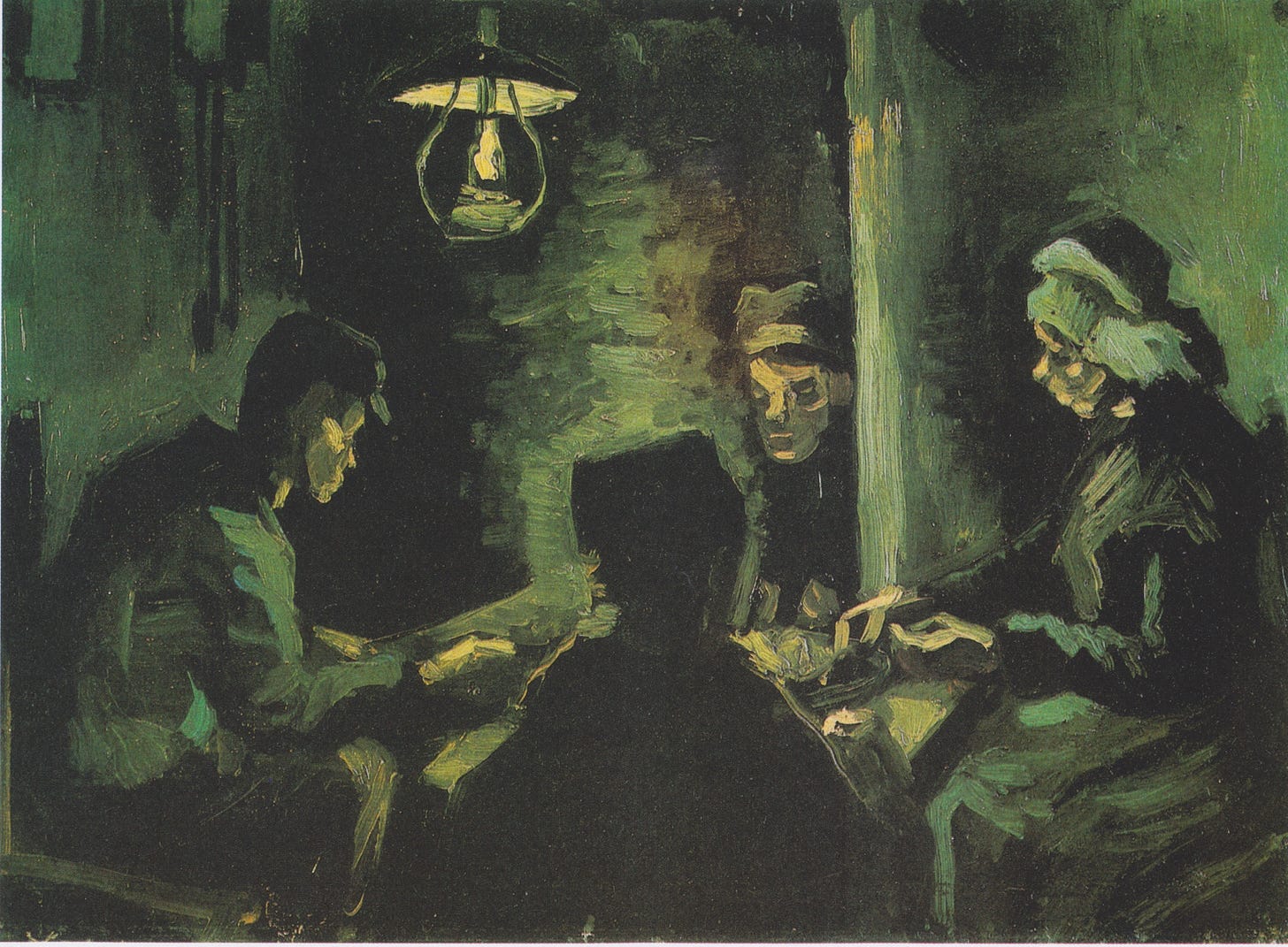
The finished piece (see below) is now heralded as one of his most important paintings and is prominently displayed at the Van Gogh Museum in Amsterdam. Yet it was heavily criticized at the time Van Gogh painted it, demeaned for its bleak palette and flawed figures. His brother Theo was one of the critics and perhaps for a good commercial-minded reason at the time. Theo was unable to sell any of Vincent’s Nuenen paintings in Paris, where the market favored more colorful art.
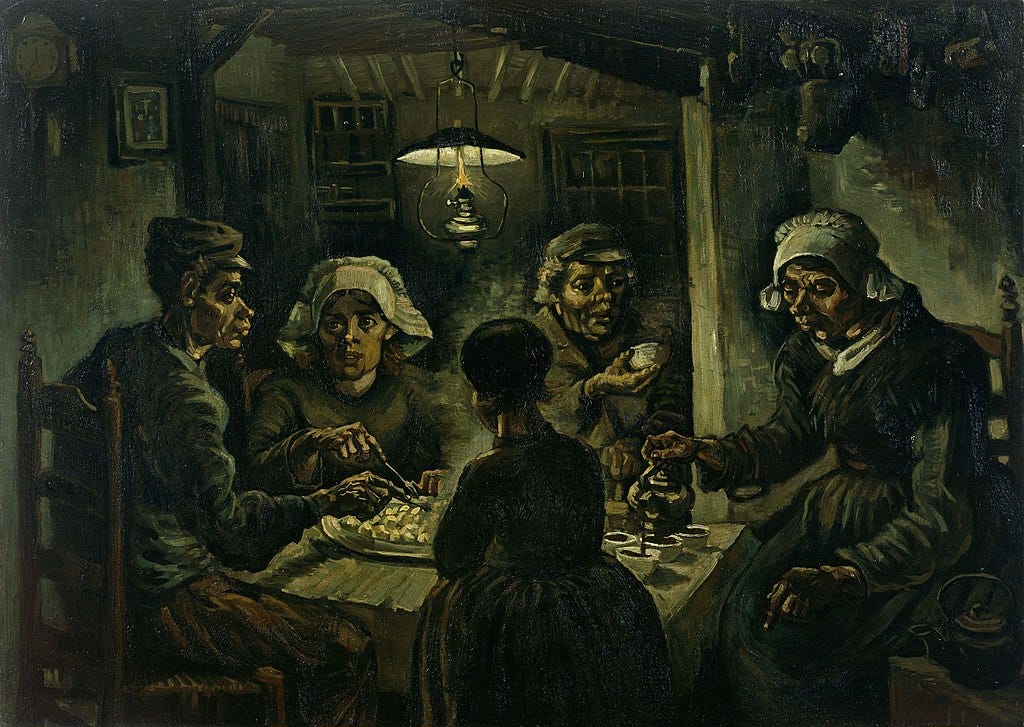
I wondered whether museum visitors expecting sunflowers and starry nights were disappointed by Van Gogh’s arguably gloomy paintings of this time. Van Gogh had visited the newly opened Rijksmuseum in Amsterdam before coming to Nuenen and was said to be influenced by the Rembrandt paintings on display, which themselves were dark if not gloomy.
In addition to producing his own work, Van Gogh taught other painters in Nuenen. The museum showcased some of these paintings that were pleasing while not showing an obvious Van Gogh influence.
After a classically European small but strong coffee in the museum café, we drove around Nuenen to (a) see other painting sites, and (b) let the locals enjoy seeing an old Volvo running smoothly. Many of the farms from Van Gogh’s time have been replaced by shops and cafes, but the water mill still stands.
This water mill was the inspiration for the painting below.
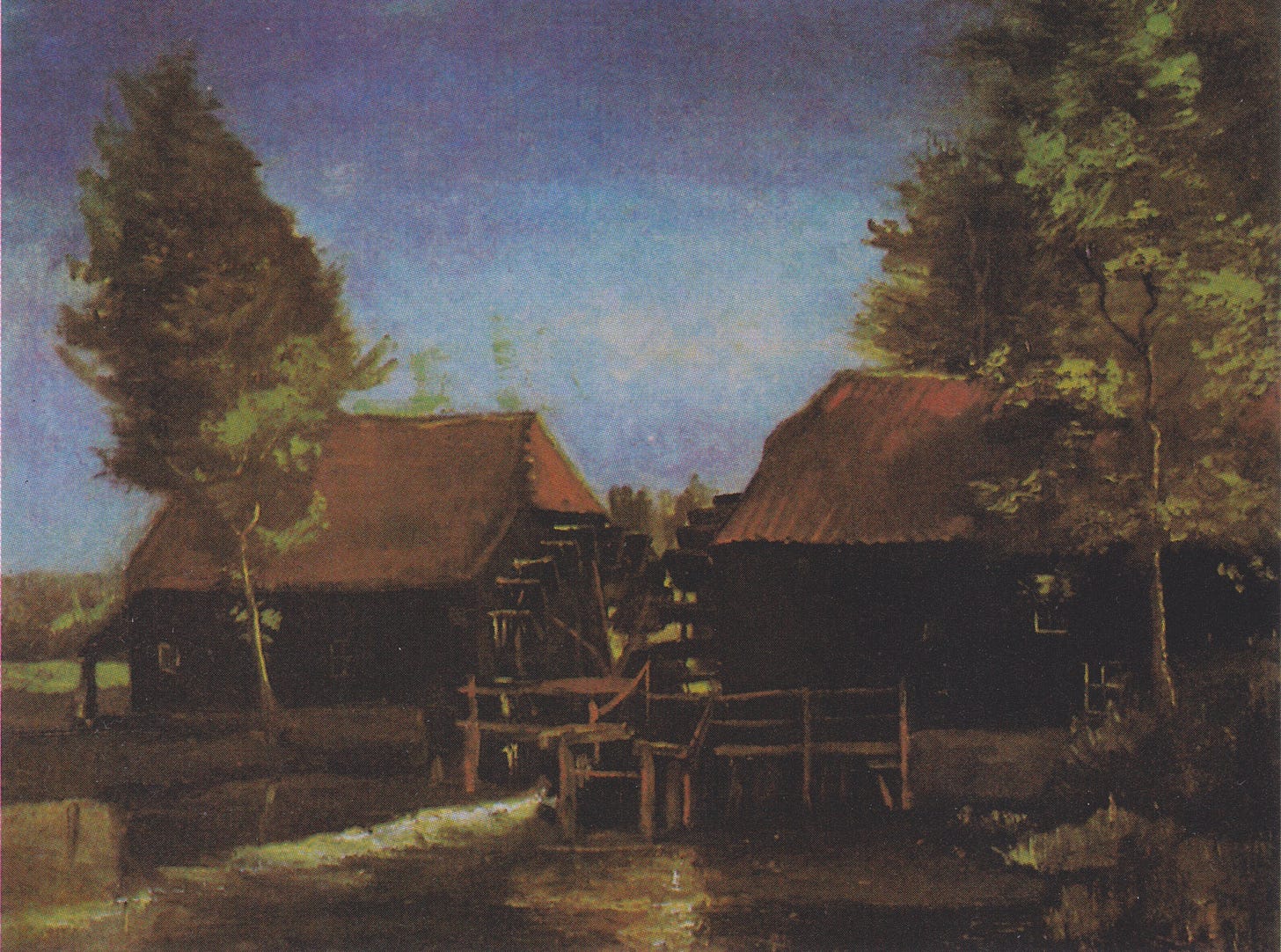
After his brief time in Nuenen, Van Gogh proceeded on to Antwerp for a few months before joining his brother Theo in Paris. As for me, I proceeded to enjoy a Dutch lunch and a few more days in Europe.
If you liked this…
Show your appreciation by clicking the like button below—I’d love to know you enjoyed the story, AND more likes help more people discover Palate & Palette.
Forward this to a friend and encourage them to subscribe.
See more than 60 stories about art and food at palateandpalette.substack.com.

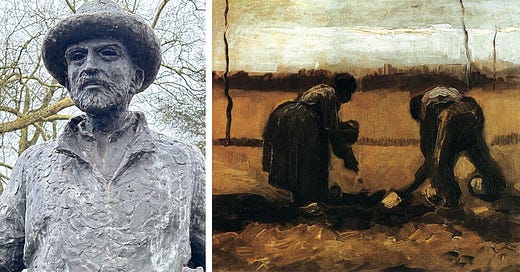



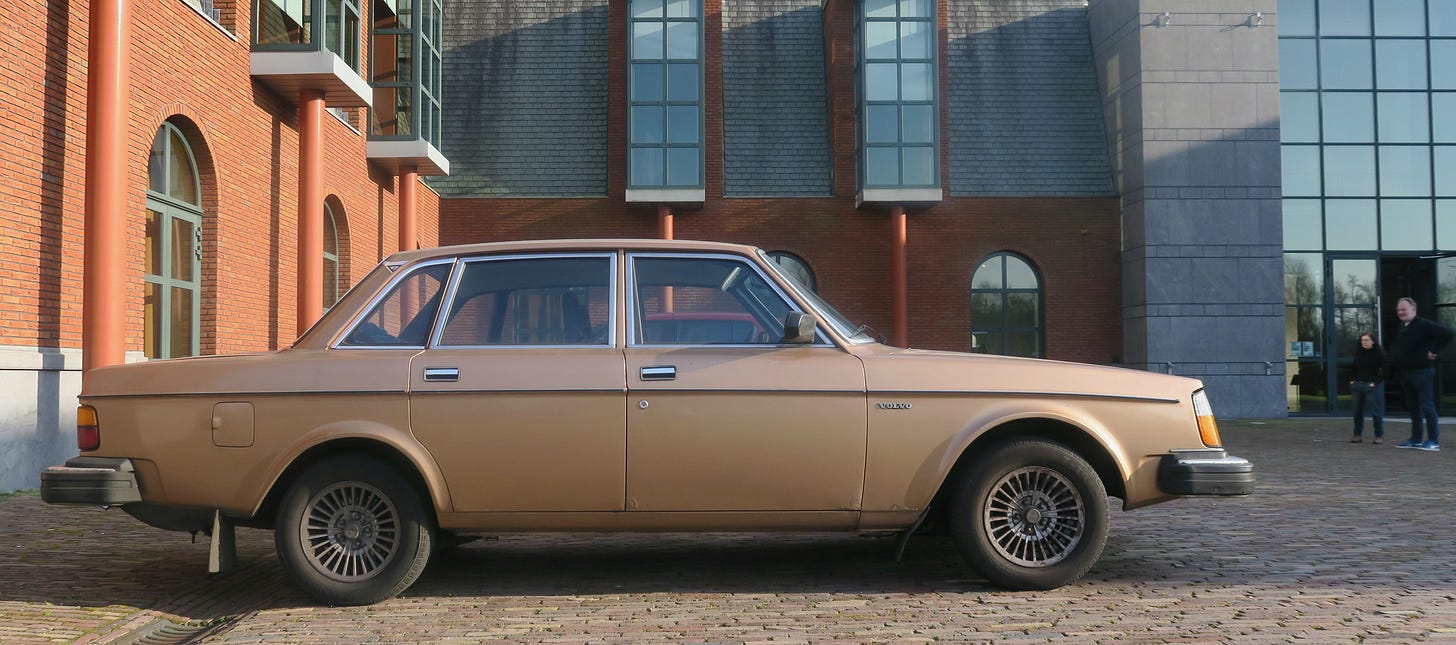



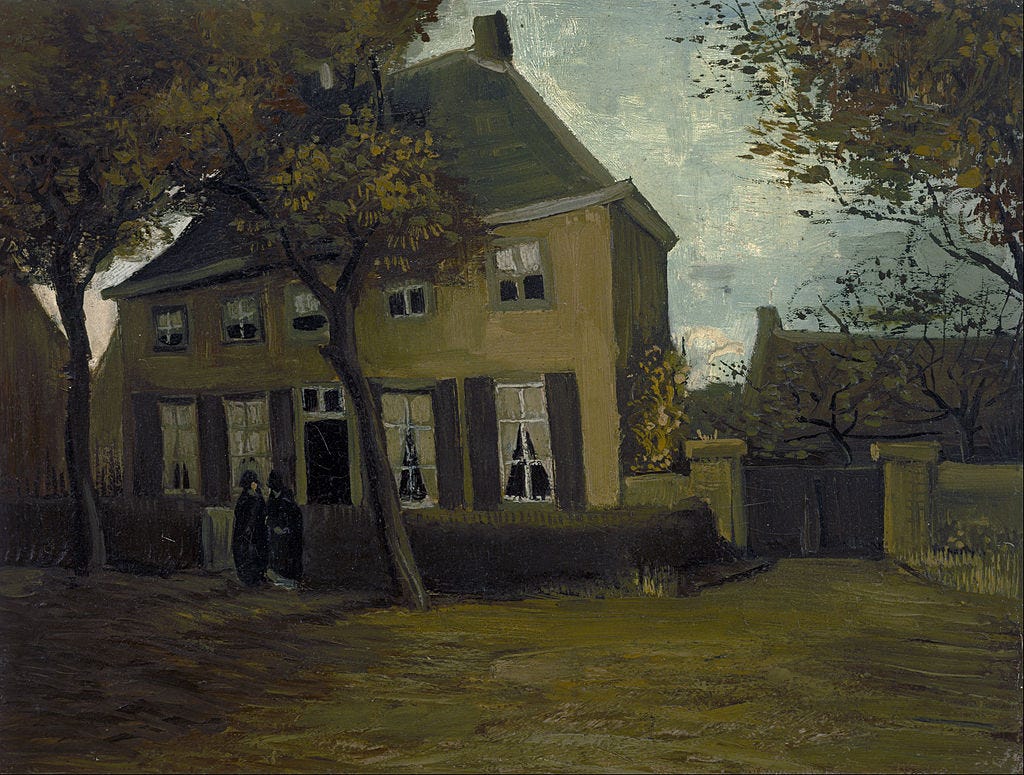
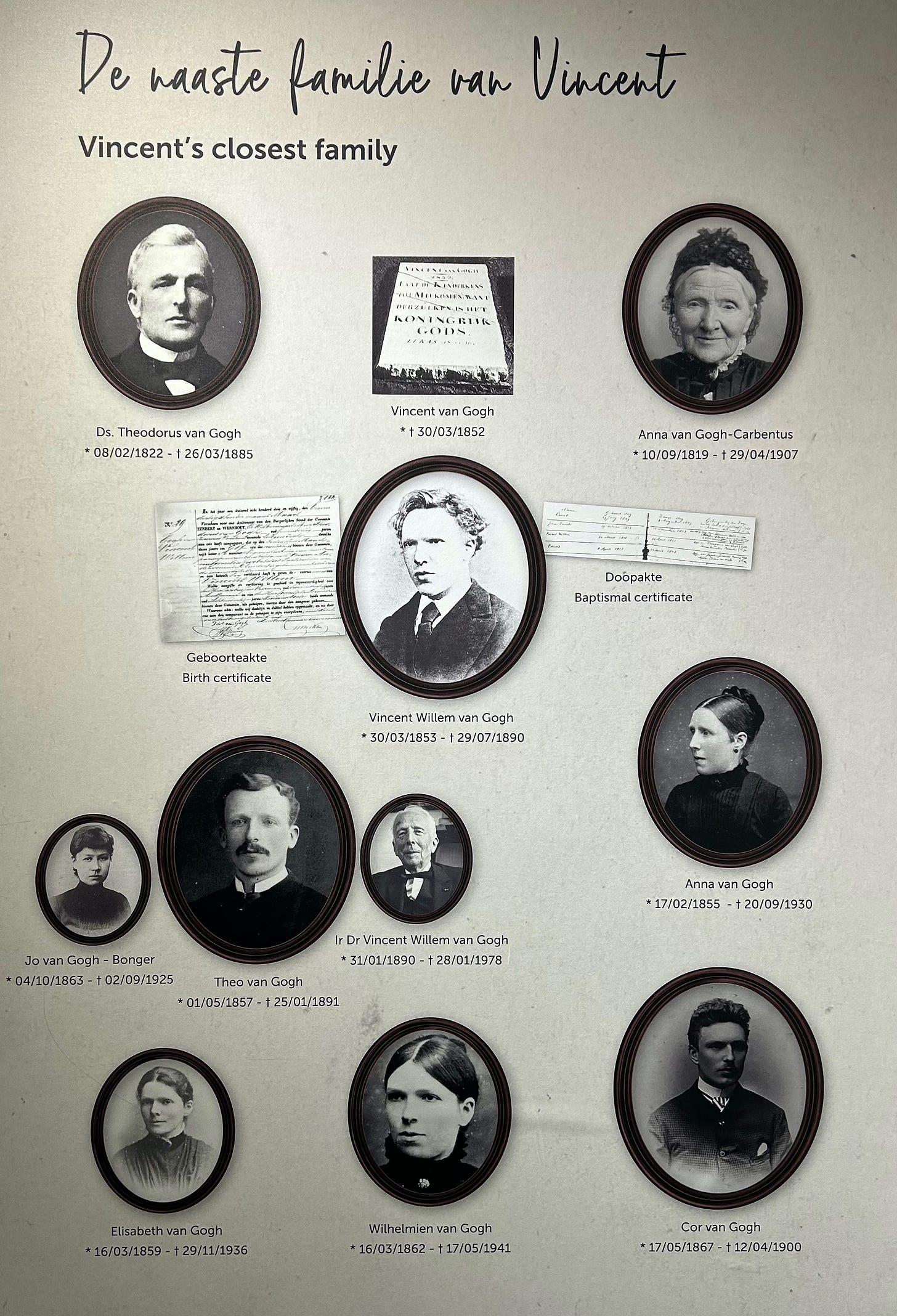


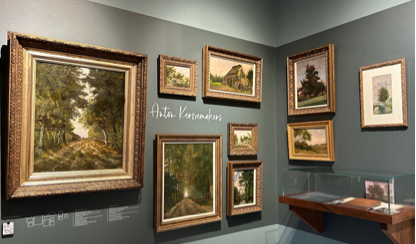
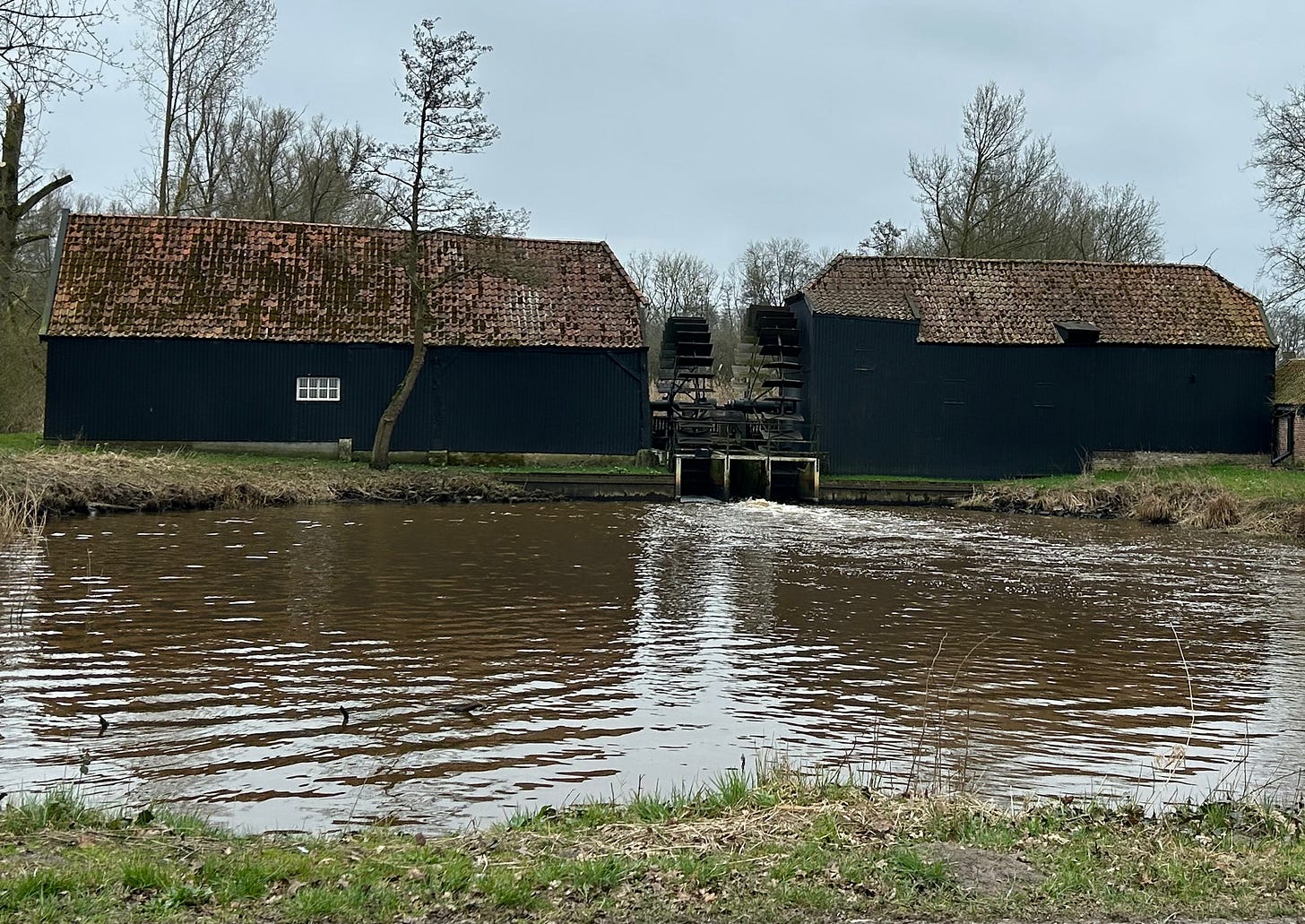

This was a great article. How exciting that you got to do this. Can’t wait to hear more about it :-)
It is fun to have the option to track work down like this. I like the place comparisons.